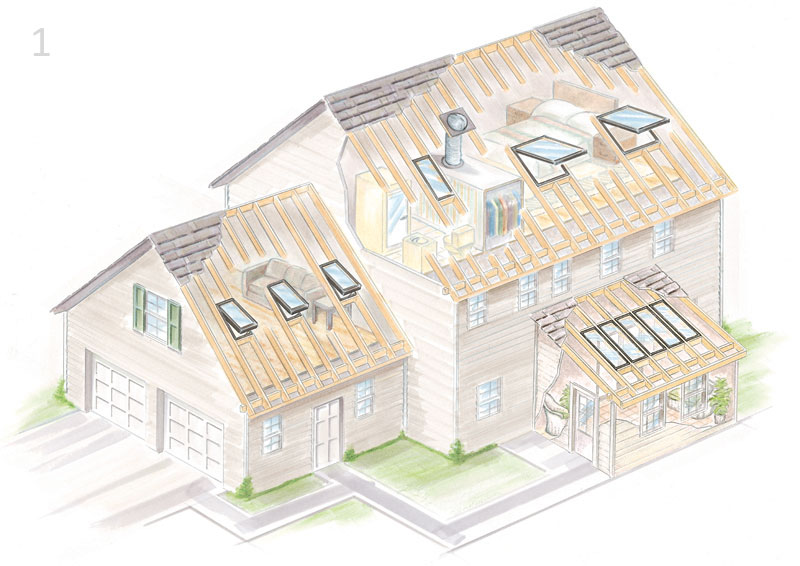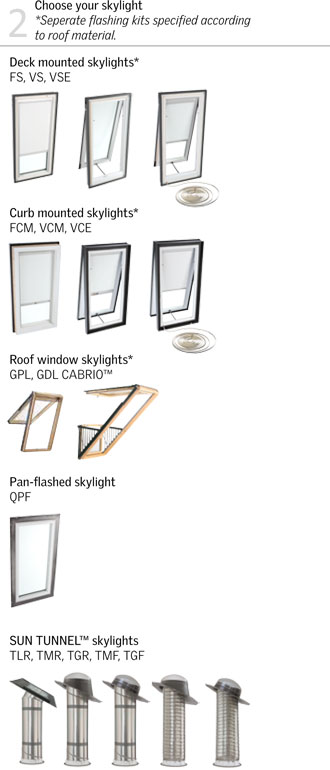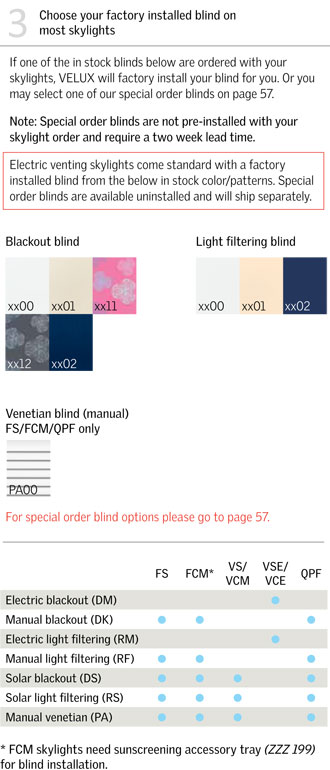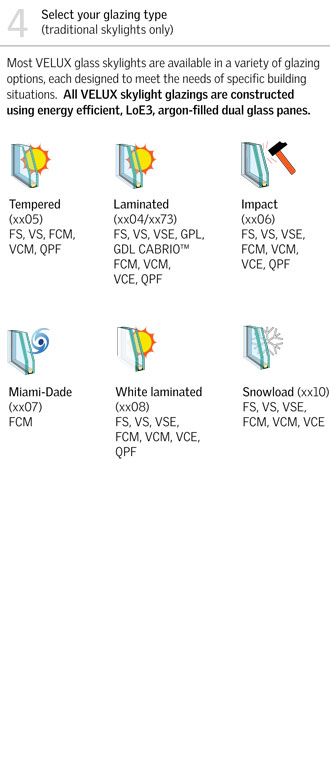How to Pick a Skylight
When it comes to choosing skylights, you have a variety of options:
- Shapes and sizes
- Different tints and levels of UV protection
- Differing levels of energy efficiency and ventilation
Select the first image on the left to view How to Order flow:
There are three major categories of skylights to consider:
1. Style and Functionality
In the broadest sense, your skylight can be fixed, operable, or tubular, but within these classifications, you have additional options.
- Fixed: A fixed skylight doesn’t move or open. Its sole purpose is to allow light into a room. Fixed skylights include:
- Flat Roof Skylights. Also known as roof windows.
- Dome Skylights.
- Round: This circular skylight bubbles out above the surface of the roof in a half-sphere shape.
- Pyramid: Pyramid skylights consist of 4 triangular pieces that come together to form a pyramid that protrudes from the roof.
- Polygon: This ornate skylight is created using multiple glass or acrylic pieces shaped like long, slender triangles (polygons) that peaks above the surface of the roof; typically a very costly, but impressive in look and styling.
- Ventilating Skylights. A ventilating or operable skylight is controlled by a remote, hand crank, or automatically by the temperature inside your house. These skylights have the ability to open and allow air to pass through. These are great skylights for homes needing a little extra breeze and circulation. Ventilating skylights are typically hinged on one end and open and close on command.
- Flat This common skylight is simply a flat piece of glass or acrylic in the shape of a square or rectangle.
- Dome: A domed skylight is similar to a flat skylight except that it is rounded up past the surface of the roof.
- Tubular Skylights. This is a popular choice for narrow hallways, bathrooms, and closets. A tubular skylight captures sunlight in a tube protruding from the roof. Tubular skylights are typically very easy to install, depending on the set-up of your house.
2. Skylight Material
There are three standard materials which are used in skylight installation. Your choices may be limited by the type of skylight you choose, so check to see which of the following options are available to you before you make a final decision.
- Acrylic. Acrylic is the most common and economical synthetic glazing available. It allows you to choose from a variety of tints, UV resistance levels and between single or double glazed applications. Acrylic is used in both the Northern and Southern regions of the United States.
- Lexan. Lexan is a synthetic glazing material similar to acrylic that is impact resistant against airborne debris. Lexan is used on skylights in hurricane-prone regions.
- Laminated Glass. Also used on skylights in hurricane-prone areas, laminated glass is available in both monolithic and insulated performance glass and can be used with Low E coatings, reflective coatings, and numerous tints and inert glass fillings. Laminated glass is not available in dome skylights.
3. Skylight Glazing Options
Glazing options give you different levels of protection and insulation. Depending on the severity of the weather and other environmental elements in your area, you may opt for limited or substantial insulation.
- Single Glazing. Available in all of the above glazing types. It provides the least insulation from heat and cold as well as sound.
- Double Glazing. Available in acrylic and Lexan and includes an insulating air space that is mechanically sealed. It reduces outside noise (i.e. rain and hail) and increases the energy efficiency of your home.
- Insulated Glass. Available for glass skylights. This provides insulation-more specifically a hermetically sealed airspace. This is also a great choice to help protect your home from the elements.
For more information, visit VELUX’s Before You Buy page and watch the “How to Choose the Right Skylight” Video.
Contact Rochester Skylights today to illuminate your home or business
with skylights, sun tunnels or roof windows!





